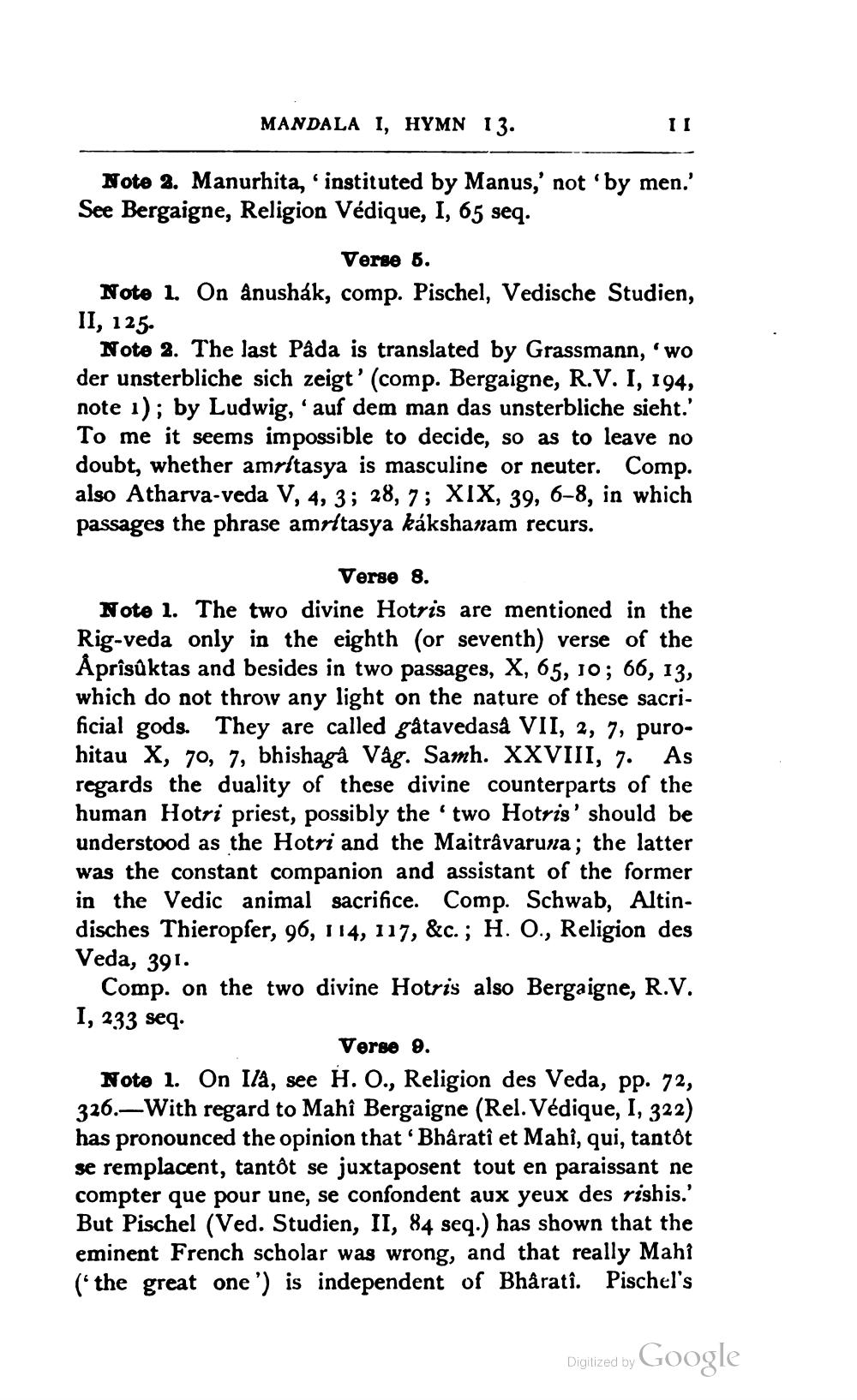________________
MANDALA I, HYMN 13.
11
Note 2. Manurhita, instituted by Manus,' not 'by men.' See Bergaigne, Religion Védique, I, 65 seq.
Verse 6. Note 1. On ânushák, comp. Pischel, Vedische Studien, II, 125.
Note 2. The last Pâda is translated by Grassmann, 'wo der unsterbliche sich zeigt' (comp. Bergaigne, R.V. I, 194, note 1); by Ludwig, 'auf dem man das unsterbliche sieht.' To me it seems impossible to decide, so as to leave no doubt, whether amrltasya is masculine or neuter. Comp. also Atharva-veda V, 4, 3; 28,7; XIX, 39, 6-8, in which passages the phrase amritasya kákshanam recurs.
Verse 8. Note 1. The two divine Hotris are mentioned in the Rig-veda only in the eighth (or seventh) verse of the Åprîsûktas and besides in two passages, X, 65, 10; 66, 13, which do not throw any light on the nature of these sacrificial gods. They are called gåtavedaså VII, 2, 7, purohitau X, 70, 7, bhishaga Våg. Samh. XXVIII, 7. As regards the duality of these divine counterparts of the human Hotri priest, possibly the 'two Hotris' should be understood as the Hotri and the Maitråvaruna; the latter was the constant companion and assistant of the former in the Vedic animal sacrifice. Comp. Schwab, Altindisches Thieropfer, 96, 114, 117, &c.; H. O., Religion des Veda, 391.
Comp. on the two divine Hotris also Bergaigne, R.V. I, 233 seq.
Verse 9. Note 1. On Ila, see H. O., Religion des Veda, pp. 72, 326.—With regard to Mahî Bergaigne (Rel. Védique, I, 322) has pronounced the opinion that ‘Bhârati et Mahî, qui, tantôt se remplacent, tantôt se juxtaposent tout en paraissant ne compter que pour une, se confondent aux yeux des rishis.' But Pischel (Ved. Studien, II, 84 seq.) has shown that the eminent French scholar was wrong, and that really Mahi (“the great one ') is independent of Bharatî. Pischel's
Digitized by Google




